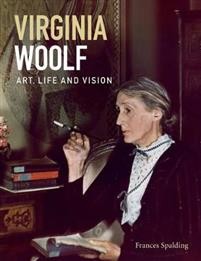Virginia Woolf: Art, life and vision
Virginia Woolf's many novels, notably Night and Day (1919), Jacob's Room (1922), Mrs Dalloway (1925), To the Lighthouse (1927) and The Waves (1931), transformed ideas about structure, plot and characterisation. The third child of Leslie and Julia Stephen, and sister of Vanessa (later Bell), Woolf was a central figure in the Bloomsbury Group: that union of friends who revolutionised British culture with their innovative approach to art, design and society in the early years of the twentieth century. Portraiture figured greatly in Woolf's life. Portraits by G.F. Watts and photographs made by her aunt, Julia Margaret Cameron, furnished rooms in which she lived. Written portraits were produced in the family home; her father, Leslie Stephen, published short biographies of Samuel Johnson, Pope, Swift, George Eliot and Thomas Hobbes, while editing the first twenty-six volumes of the Dictionary of National Biography. Throughout her life, Woolf, a sharp observer and a brilliant wordsmith, composed memorable vignettes-in-words of people she knew or encountered, and was herself portrayed by artists and photographers on many occasions. Illustrated with over a hundred works from public and private collections, documentary photographs and extracts from her writings, this book catches Woolf's appearance and that of the world around her. It also points to her pursuit of the hidden, the fleeting and the obscure, in her desire to understand better the place and moment in time and in history in which she lived. In charting some of the milestones in Woolf's life, author Frances Spalding acknowledges the seen and unseen aspects of her subject; the outer and the inner, the recognisable and the concealed.
- Forlag: National Portrait Gallery Publications
- Utgivelsesår: 2014
- Kategori: Essay
- Lagerstatus: Ikke på lagerVarsle meg når denne kommer på lager
- Antall sider: 192
- ISBN: 9781855144811
- Innbinding: Heftet m/klaffer













